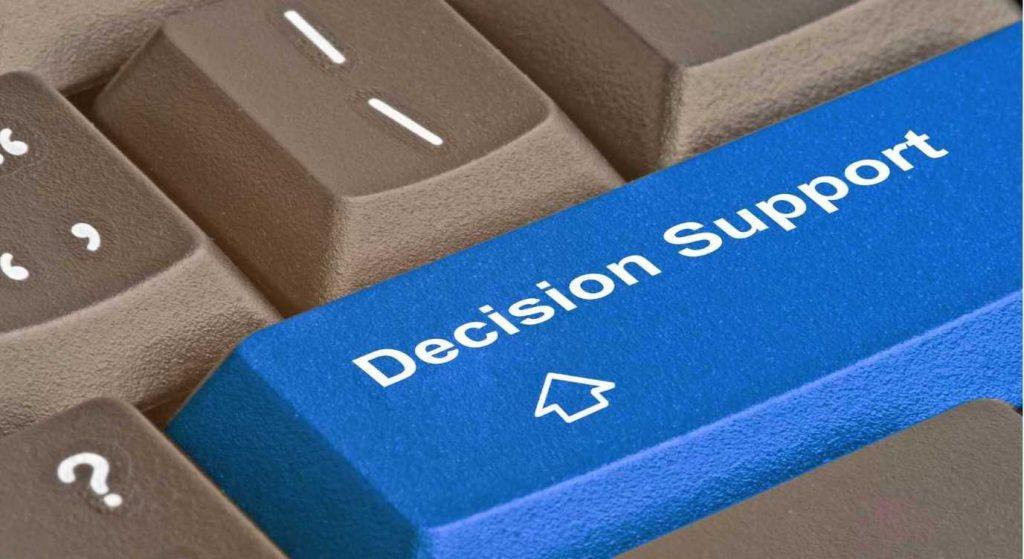EHR decision support tools are important EHR features that help providers treat patients safely. These tools can be simple notifications or alerts, as well as more complex functions like a suggested treatment step based on a scored assessment.
They have become a standard functionality across the industry, but it is important to note that the quality and flexibility of decision support tools can vary from one EHR to another.
If you have not experienced these tools as a user before, they can be a bit hard to visualize and understand. Read on as we examine decision support tools in more depth below.
What are EHR Decision Support Tools?
Before we start, it’s worth mentioning that EHR decision support tools are also commonly referred to as “clinical support tools.”
Much of the initial decision support capability in EHRs were for clinical purposes. Now, the technology has advanced so that decision support tools can assist users in other areas of your operation, such as finance and billing.
In any event, it may be easier to begin with an example to understand this feature.
A very common clinical decision support feature is contraindication checking, which alerts a prescriber if a proposed medication has any negative interactions with the patient’s current medications and/or condition. If the user tries to prescribe a medication that the patient is allergic to, the EHR would automatically alert them to that fact.
In this way, the system provides critical support as the user decides which medication to prescribe. In the case of a serious allergy or deadly combination of medications, decision support tools can literally save lives.
Contraindication checking is a great example because it shows how these features serve as peripheral guardrails to ensure that patients are treated accurately and safely in an efficient manner.
Decision support tools may not directly deliver treatment, but their automated, supplemental assistance helps users make as informed of a decision as possible in any given treatment scenario.
-1.jpg)
Identifying Dynamic EHR Decision Support Tools
We mentioned that a decision support feature like basic contraindication checking has become standard in our space.
You can actually purchase out-of-the-box decision support packages to integrate with your EHR that offer those standard drug-to-drug, duplicate therapy checkers.
However, there are a few issues to consider when discussing third-party decision support options.
First, an EHR that does not contain internal decision support tools is most likely pretty outdated. Or, the platform is rather basic in its functionality, which providers can easily grow out of.
And second, every external integration your operation requires threatens the synergy of your overall software solution.
Ideally, your EHR contains most or all of the decision support features your organization needs. Nowadays, that would include a suite of those standard decision support tools, as well as the ability to leverage that technology in client-specific ways.
Another example should help clear this important distinction up.
At Sigmund, we serve the diverse and highly specialized mental health and addiction treatment communities. We’ve found that one behavioral health operation to the next may require very different decision support, based on their patient population, treatment approach, and so on.
For example, an abstinence-based treatment center would require entirely different decision support than an MAT facility in certain situations.
As a result, we’ve built a great degree of configurability into our EHR’s decision support feature. Using our workflow engine, we’ve been able to give our clients the flexibility to tailor their decision support tools to their specific processes and services.
At this point, our clients can virtually create their own decision support logic and alerts in the system.
.jpg)
If you will indulge us for a final example, the usefulness of configurable decision support features was recently illustrated during the pandemic.
As the global spread of coronavirus strained the healthcare industry and its resources, providers and vendors were forced to quickly develop solutions to manage the risk of the virus. One of the first challenges that had to be met at hospitals was identifying patients with a positive coronavirus test and then safely triaging them.
Imagine the benefit of being able to seamlessly configure tools in the platform designed to provide COVID-19 decision support.
With the right platform, hospitals could create alerts for every patient that records a fever to detect early signs of coronavirus. Or prevent users from moving any COVID-19 patients to a bed/floor in non-triaged areas of the hospital.
The possibilities are virtually endless. Dynamic decision support features should be able to accommodate and accentuate your specific process in a multitude of ways.
A more rigid out-of-the-box decision support package may not offer that flexibility.
Software Solutions: Further Education
We hope you have a better idea of the concept and functions of EHR decision support tools.
Decision support features are largely powered by the software’s workflows, which we like to call your EHR’s nervous system. Check out this blog post that focuses on workflows for some more information on intelligent EHR automation.
Decision support tools can also come in the form of EHR dashboards. Take a look at our deep dive on dashboards for an even deeper understanding of decision support and how an enterprise EHR should promote the delivery of excellent care.

